 India : Safety by City
India : Safety by City
The largest country in the South Asia Region, the land impossible to remember once you visit it, India, is located in the center of South Asia.
Officially referred to as the Republic of India, it is the seventh-largest country in the world by area and has a population of over one billion people.
It is second only to China in population, though probably not for long.
India is an extremely memorable country, and due to its size, it varies widely in geography, climate, culture, language and ethnicity across the country.
As for tourist attractions and things to see and do in India, there are so many options that you would probably need to stay in India for a period of six months in order to see it all.
It one of the world’s fastest-growing economies and fastest developing countries which make its cities an attraction by themselves.
Though it has its parts that are ridden with poverty, it’s considered to be an emerging superpower.
Among the breathtaking things to see in India is one of the world wonders – the Taj Mahal, you can see tigers in some of the best national parks, and enjoy the Goa beach that is visited by more and more tourists every year.
Warnings & Dangers in India

OVERALL RISK: HIGH
Though India is considered a generally safe country, due to its size, there are more dangerous areas and less dangerous ones. It is necessary that you remain vigilant at all times.

TRANSPORT & TAXIS RISK: MEDIUM
Be wary of pickpockets in public transport, and taxi drivers (as well as tuk-tuk drivers) trying to rip you off. Be especially careful in the overnight buses or trains and don't accept any food or drinks as they might be spiked. Keep in mind that driving is dangerous because of poor road conditions and the fact that India follows the left-hand driving system.

PICKPOCKETS RISK: HIGH
Pickpockets operate literally everywhere in India. Be careful not to get your pockets picked and bag snatching is another very common form of petty theft. Pickpockets are especially common in public transport.

NATURAL DISASTERS RISK: HIGH
The main threats to India when it comes to natural disasters are earthquakes, floods and severe storms that commonly hit this beautiful country causing great damage.

MUGGING RISK: LOW
Muggings and kidnappings aren't at all common in India.

TERRORISM RISK: HIGH
India keeps being targeted by terrorists so there is a great risk of them trying to carry out an attack again. Anti-Western terrorist groups sometimes operate in India, including Islamist extremist groups.

SCAMS RISK: HIGH
This is a serious issue in India. If you're a first-time traveler to India, you will most certainly get scammed as this country is notorious for scams performed on tourists. Taxi scams with taxi drivers convincing you to take other accommodation are very common, as are those where vendors give you less change than they should. Whatever service anyone offers you - you find out how much it costs first, because they will try to charge literally everything.

WOMEN TRAVELERS RISK: HIGH
Sexual assaults are on the rise in India, and it is dangerous for women to travel alone in this country, whether by day or night. Always strive to be accompanied by someone when outside. Move-in groups and avoid poorly lit and deserted streets.
So... How Safe Is India Really?
Generally speaking, India is mostly safe for tourists.
Violent crime isn’t common in this country, especially not against foreigners, while petty theft does exist but it is more prominent in areas frequented by tourist.
You can expect pickpockets in crowded places such as bus and train stations, and it is highly advised that you keep your bags and belongings tightly by your side because bag snatching is also one of the popular forms of petty crime.
Thieves have been known to break into accommodations and rooms where tourists reside.
Be prepared that people are going to try and scam you or extort money from you, even the police, though the situation with corruption has improved during the last couple of years.
Keep in mind that homosexuality is illegal in India under a colonial-era law, with penalties of imprisonment or a fine.
The law that is still in force has been used for years to harass the LGBTQ community.
Police officers have been known to harass, extort money from and blackmail homosexuals in India, so members of LGBTQ might want to think twice before venturing into this country.
India follows the left-hand driving system, which can cause difficulties for tourists wishing to rent a car.
If you plan on driving in India, bear in mind that Indian roads aren’t in the best condition and that Indian drivers can oftentimes be reckless when behind the wheel, and don’t forget that you might run into wandering livestock on the road.
How Does India Compare?
| Country | Safety Index |
|---|---|
| India | 47 |
| Morocco | 54 |
| New Zealand | 90 |
| Hungary | 83 |
| United Kingdom | 77 |
| Singapore | 90 |
| Sweden | 83 |
| Uruguay | 77 |
| Switzerland | 89 |
Useful Information

Visas
Most countries need a visa in order to enter India. Make sure your passport is valid for at least six months past your planned date of return. If you are not sure about your visa status, it is best to visit www.doyouneedvisa.com which will let you know whether or not you need a visa.

Currency
The Indian rupee is the official currency in India. ATMs are widespread in most towns and as for credit cards, it is advised to always carry cash as a backup. MasterCard and Visa are the most widely accepted credit cards.

Weather
Indian climate is mostly influenced by the Himalayas and the Thar Desert. Since it is so large, the climate in India vastly varies, ranging from tropical in the south to temperate and alpine in the Himalayan north. The elevated areas in the north commonly receive sustained winter snowfall.

Airports
Indira Gandhi International Airport is the primary civilian hub for the National Capital Region of Delhi, India. It is located in Palam, 15 km south-west of the New Delhi railway station and 16 km from New Delhi city centre.

Travel Insurance
Just like anywhere else, we recommend getting travel insurance when traveling to India, since it covers not only the costs medical problems, but also theft and loss of valuables.
India Weather Averages (Temperatures)
Average High/Low Temperature
| Temperature / Month | Jan | Feb | Mar | Apr | May | Jun | Jul | Aug | Sep | Oct | Nov | Dec |
|---|---|---|---|---|---|---|---|---|---|---|---|---|
| High °C | 21 | 24 | 30 | 37 | 40 | 39 | 35 | 34 | 34 | 33 | 28 | 23 |
| Low °C | 8 | 11 | 16 | 21 | 26 | 28 | 27 | 27 | 25 | 20 | 13 | 9 |
| High °F | 70 | 75 | 86 | 99 | 104 | 102 | 95 | 93 | 93 | 91 | 82 | 73 |
| Low °F | 46 | 52 | 61 | 70 | 79 | 82 | 81 | 81 | 77 | 68 | 55 | 48 |
India - Safety by City
| City | Safety Index |
|---|---|
| Agra | 50 |
| Ahmedabad | 67 |
| Bangalore | 54 |
| Chandigarh | 77 |
| Chennai | 50 |
| Delhi | 45 |
| Gurgaon | 71 |
| Hyderabad | 65 |
| Jaipur | 53 |
| Kochi | 70 |
| Kolkata | 49 |
| Kolkatta | 48 |
| Mangalore | 75 |
| Mumbai | 49 |
| Navi Mumbai | 80 |
| Noida | 71 |
| Pune | 74 |
| Surat | 80 |
| Thiruvananthapuram | 71 |
| Vadodara | 71 |


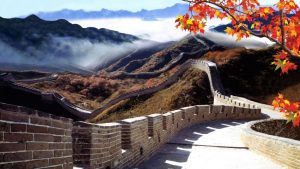
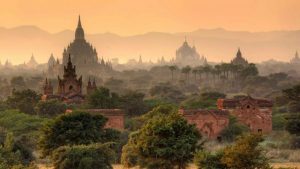

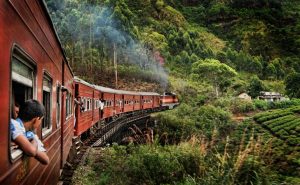
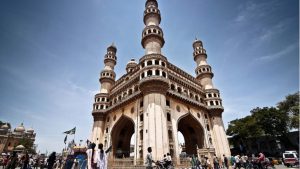


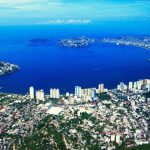
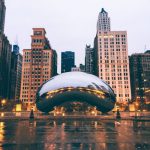

Section 377, LGBTQ+ people are now legal in India.
yep
Awesome India
Contrary to what internet mentions, India is a very safe country if you understand and respect local culture, tradition and beliefs. Excluding the 7 metros, women dont go out putting their meat on display. Dress modestly and in comfortable clothing without putting your undergarments on display. You are seeking unwanted attention when you dont dresss properly. I have travelled every other year to India and not once I have been mugged or my drink has been spiked even after accepting drinks from strangers. The biggest safety factor in India for tourists is its population !! There are just people everywhere and nowhere to hide from public. Tell me which city in west doesnt have shady areas in its cities and towns? Indian also has its fair share. Avoid them and you will be safe. Day time is very very safe in India and dow aht you want. pickpocket is a huge problem but mainly in 4 metros and big cities like Bangalore and Hyderabad.
On another note, it is fun to watch how people of differnet religion, belief, culture live in one country with such a good harmony. They not only celebrate Hindu festivals like Diwali and Holi, but also celebrate Eid, Christmas, Mahavir jayanthi and Hanukkah. You will NEVER see that ANYWHERE in the world.
Thank you soooooo much
You will see multi ethnic celebrations in Mauritius too
I went and was almost scammed every 5-10 minutes… people trying to pick pocket and being annoyed by everyone trying to be my friend….. holiday turned into a nightmare
How surprising, people in India have fear from law and order. So, no such thing happens. Yes, of course wherever this happens are not tourist or general place to visit by tourist or normal Indians even.
India is safe to travel in night even. Roads are much better now in past 5-6 years.
Everything is online and record of booking and can be shared with any of your known.
Every genuine travel co. is on apps enabled with police alerting system.
Everyone in India will tell you where to go if you want some such adventure. That is for Indians themselves as well. But no one will kill you.
Well said 🙏
I agree...India is quite safe.
You might want to visit Suriname on the northwest coast of South America. Diwali and Holi, Eid, Christmas, Mahavir Jayanti as well as Hanukkah, all publicly celebrated there as well. BTW – I enjoyed my visit to India very much and found it quite safe. Of course, I investigated and respected local customs during my visit.
Horrible
This is why my Dutch Indian friend said
We Indian always said we’re proud of something or we’re good at something but in the end, they are not. They are just skippy mean they rather ignore the mistake and keep doing mistake.
Why not just said we’re not proud human beings but we are trying to make things living better and make it safe. Like for India r*pe crime is like Holy *** that s*** higher than Covid infection
religious hatred on raise
I don’t know when you wrote this review…
but today India is a country of concern for women, minorities and hindu dalits
Multiple agressions against minorities, religious hate speech by politicians and hindu godmens have rosen to 1130 % last year…
Unfortunately the bjp ruling party pays heavily the medias to mask all the odds but only lies on the net.. Anyway just check your consul services and you will have better information
Best Country to visit, live, learn and enjoy.
am not sure which part of country or even the world you have roam around! India is by far one of the most safest countries for people of all the cast, color and sex. Its population is almost 4 times of USA and there are more than 18 officially recognized languages in India, with every 100 Kms the dialect gets changed and every state having there own mother and state languages. With so much of diversity and with a population of 1.39 billions its pity how the fewer cases of violence and aggression are read as biggest threats to the community and harmony. When the whole world is crippling against the religious hatred India is holding its head way higher as epitome of religious harmony. In US, every other day some or the other racial attack will happen, people will ignore, go to Paris the most beautiful city in the Europe, every minute of your walk will be full of fear of getting looted or attacked by small miscreants. Forget nights, even in the day time its so unsafe to walk in the streets of Paris. Everywhere pick pocketing will happen. On the concern of women, no western world can stand in front of India. As every day hundreds of cases will come up as the crime against women, child in the US, Germany, France but nothing seems to effect you people but the cases or crimes once it happened in India becomes a world wide spectra.
Agreed India is still developing and still in lag with the western world but when it comes to the safety and developments it is and it will always be the best country to visit, live, learn and enjoy.
cheers!
It’s an amazing country,best place for tourists to enjoy and above all I guarantee you the safety as well .Yes go well dressed be decent enough and there you go the finest things ,places food shopping to enjoy .Yes there is no country in the world 100% safe but from all India is the safest .Thanks.
Nope..just because you are india..you won’t deny anything right..rape cases happen in india every 13 sec lol
Your attitude makes things better or worse
pick pockets, frauds are around everything else is good. nowadays some moral policing cases reported. anyhow dont believe any one blindly then it would be a nice vacation over there
India is Safe
India is the most misunderstood country in the world.
There is no country in the world which assure 100% safety in the world, same with India.
There are few pointers which separate India from the outside world:
1. People carrying a gun or any dangerous weapon is uncommon and not legal in India. While most of the nations are fighting with this problem, India is far better and secure in these terms.
2. Indian people are genuinely good, especially in tourist areas like Goa, Kerala, Maharashtra, Northern State, Kashmir and more. They accepted tourism as a culture and source of earning.
3. I do not buy writers comment about terrorism in India. I am not denying terrorism especially in one state JnK has some issues, but even in that state they treat guests and tourist well and there is not a single incident in JnK in last 20+ years where foreign tourist face any problem. All other India is completely safe.
4. Women safety is a world wide issue and needs to be taken seriously. Basic precautions are necessary not only in India but in every part of the world. Indians are mostly well-behaved but misunderstood in this term.
5. India is too crowded to be unsafe :-).
India is a beautiful country with all the flavors and culture.
Few things as per me you need to take care of are:
1. Don’t drive. If you are an outsider do not even try to drive in India, even if you are a certified F1 driver.
2. Avoid street food, especially who has a weak stomach.
3. Choose your time carefully to visit India in terms of weather.
Edit it man
🤣🤣🤣🤣🤣🤣🤣🤣🤣🤣🤣🤣🤣🤣🤣🤣🤣
Thank you for your advice.
Nice joke,india is safe country
Really nice pieces of information. Thanks for sharing.
We have not seen any terrorist attack out of J&K for the last 7 years.
Today India has the best government that nicely maintains terrorism.
What ever Hemendra Singh told about india is absolutely correct generally indian people are friendly behivour with others they give all respect to evey one , they won’t think indian are foreign but unfortunately media either india are foreign not giving importance about this beautiful country to visit every one . regarding safety some croudy places may be pickpocketers problem arise this is not in all only populated cites that’s in railway station Most rush areas if person takes care there is nothing to be done .
Not good for all community.
Aptly said…in fact you gave a realistic picture of India as a country. It is pretty better in safety compared to the other countries in the subcontinent
Stop being bias Hemendra Singh Patel
Reading your reply it shows that you are a bias Indian trying to defend his country without knowing much about other countries.
1. Gun problem is typically a US problem. Saying that most nations are fighting this problem shows your ignorancy about other countries.
2. The problem is you don’t see it from a tourist’s point of view. Depending on where, you are literally harrased every few minutes from people asking money, wherever you go prices are more than actual prices, same for taxis and such… Ofc you’ll never experience this as a local.
3. Are you living under a rock if you seriously think there hasn’t been terrorist attacks in the last 20 years? The 2008 attack on Mumbai was so horrible why would you pretend it never happen. While I agree that many countries are more at risk, we can’t say that India outside J&K is completely safe. That’s a lie.
4. Women safety is not a world issue. Go to most european countries. Go to Scandinavia. People over there will laugh at your ignorant statement. You just can’t deny the number of rape and sexual agressions. Well-behaved or not, numbers don’t lie…
5. Population cannot be an excuse. China has around the same population but it is way more safe for tourists.
safest place in the world
Everything said in this page is wrong, India is one of the safest places in the world. first rape and other sexual assault has been going down for 12 years straight now and mugging is not a problem. Terriosim is a very small risk but still it is a risk but very little. if you go to India theirs almost no chance of being the victim of a terrorist attack. transportation is mainly safe but i will say India is very corrupt its also very cheap which is good for you. honestly its the perfect place to visit theirs so many things to do. you will probably hear a lot about dont travel to the Pakistan boarder but actually theirs a bunch of festivals and gatherings at the boarder and its perfectly safe. India is extremely safe period.
Do not visit unless you want to catch a third world undiscovered disease
Nope!
Ignorance is bliss, clearly
Racist much?
No racism in her comment, but I didn't see anyone get sick.
Wait. Did Magdelena write anything about race? This fake “wokeness” is getting too thick. She said nothing about race, she commented on the liklihood of getting sick, which I might add is quite low, because of all of the vaccinations one needs to get before visiting India. I had a great time (2016) and did not witness anyone getting sick, but I did see several people who were carrying guns and they were not police. With the prevalence of guns in the US, it might not surprise you to know many people like me are tuned to be able to spot someone with a concealed weapon. I spotted several while in India. I minded my own business and had lots of fun. India not dangerous for me, but I could see how a woman might be intimidated in some situations there more so than in most countries.
Now get lost
We are very happy that you won’t visit, we have enough chutiye as it is.
India is as safe as you want it to be. Don’t be stupid and you’ll have the best time of your life, but that’s applicable for the entire planet, not just India.
You are Just Idiots. Most Corona cases are in USA and even after so much Population less number of cases
What does that have to do with it?
What does COVID-19 have to do with traveler safety in India? Did you post to the wrong thread or something?
You must be Pakistani
India is Safe, cultured and friendly
There is no such issue.
How surprising, people in India have fear from law and order. they care of safety, food and life much more than any European or American now. So, no such thing happens. Yes, of course wherever this happens are not tourist or general place to visit by tourist or normal Indians even.
India is safe to travel in night even. Roads are much better now in past 5-6 years.
Everything is online and record of booking and can be shared with any of your known.
Every genuine travel co. is on apps enabled with police alerting system.
Everyone in India will tell you where to go if you want some such adventure. That is for Indians themselves as well. But no one will kill you.
SO RUDE!!!!!!!
Historically, most epidemics have started in European countries due to the terrible sanitation systems and the high population density in their overcrowded cities (Smallpox plague spread through North America by colonizers). I hope you’re trying to be sarcastic, because I’m not. Not talking about Covid, but a high population density OVERALL does not equate “third world undiscovered disease”, and it definitely does not equate ignorance, that mantle is held firmly by Internet users and review posters.
Safe, but not completely safe.
I would not say it is the safest place in the world, but it is relatively safe to travel there. Pickpockets are there, and it does have quite a few common scams in the busy district of India, such as a bird poop scam, in which they often deliberately spill poop on your shoes without you noticing, then pretend that they are the good ones, helping you clean your shoe up. Afterwards, they charge crazy prices for your cleaning after they are done. Terrorism may happen here as well, but I bet it is quite rare in India. What I don’t exactly agree with you is the sexual assault. India is a place where you have to be wary. Avoid going to dimly lit areas because that’s where most prey. Other than that, enjoy your trip to India. Have been there thrice, and will do it again.
obviously Indian ppl care too much abt their country image and try to defend whenever and wherever possible–it only tells me one thing–their lack of confidence and eagerness of getting acknowledge and accepted
ye paka pakistani hai… m sure!!!
Says the well-behaved Indian ^
As an Indian I observed how chinese media loves to portray India as the worst place possible yet Chinese are among the top five countries which visit India so you enjoy living in your small bubble of ignorance. It would be better for us.
Stop being bias
Anonymous, your reply made no sense. Chinese are not even top 10 countries that visit india the most. Most are from the US, UK, Bangladesh, Canada, Nepal. And what that shows is they are probably Indians visiting their relatives in India…
Your comment just proved the point of the OP.
Unsafe for attractive women
Don’t go as an attractive American female. You’ll be harassed, yelled at, followed and in fear.
You can’t wear normal American attire. You can’t even go to a bar and drink without being physically intimidated or even mildly assaulted as a woman. You can’t go to any tourist attraction without being consistently bombarded and scammed. You’ll spend weeks sick to your stomach. I’ve traveled all over the world and never felt more unsafe than when in India.
I’ve seen men beat women openly in public with the police onlooking and not caring; I’ve seen an older orphan beat a toddler until his head split open and the police told me not to try to stop it, that this is how it’s supposed to be. The men are the most sexually aggressive of any country I’ve ever been to and won’t take no for an answer, and that says a lot.
I’ve been to Saudi Arabia, Egypt, and Turkey, and felt less threatened as a woman in all three. I’m not a tourist with a bad attitude, I opened an entire office in India with hundreds of employees and lived there for 6 months while doing so. It was quite possibly the worst human rights violation I’ve ever witnessed.
Equal rights are not a thing
People who think women’s basic rights are safe in India are blind to a growing problem of epic proportions. I’ve seen too much documented proof to believe that India is just as safe, as say, Norway, for the female traveler.
ummm......
+BN yes violence is not nice and the police should be more vigilant when they see things like that but if by ‘normal american attire’ you mean skimpy/tight clothes and mini skirts drinking in a country where girls wear long shalwar kameez and dupaatas on their heads and don’t leave the house without their fathers/brothers/husbands so men don’t have a chance to raise an eyebrow or harass them then i would also be ashamed of you if i saw you like that.
even women TV presenters wear a headscarf when they visit countries where women cover their hair to show respect. and seriously go sort out your abusive, racist president before talking about a country that was divided, scammed and robbed of for years by all of u ppl in exchange for your bloody alcohol and is now a third world country.
and who said you are ‘attractive’??????
maybe in fifty kilos of makeup (that one of the 60,000,000 child laborers in india has mined minerals for in tunnels to put in your lipsticks)
learn some manners.
okay then
…okay calm down…
You are not talking about India, women do not need anyone’s permission do go anywhere unless they are Muslim. Islam is one of many religions in India, do not give an unnecessary impression of an Islamic country. In general, if you are planning to visit a country, try to respect local customs. If you are not interested in understanding other cultures then there is very little point in your being here, and India already has enough people as it is. You are free to wear what you please as long as it is legal, but if you have noticed that people around you dress more conservatively, then you can’t with any conviction complain about the amount of attention you draw when you are aware why you are drawing it. Tourist scams are a thing, the exchange rate is so high that tourists don’t notice when they are being overcharged and they get taken advantage of at times. It is better to travel in a group, and bars in India are as unsafe as they are all over the world.
As for the violence you are talking about, I’ve lived 20 years in India and never seen anything like it, and I don’t even live in a “safe area”. Granted, some people engage in violence. That is rare, and rarer in India than its occurence worldwide.
It seems you open your office right in the middle of Wasseypur. I’ve never seen the amount of crime you’ve seen in just 6 months, that’s got be a record. The point about children spilitting each other’s heads open was a nice one, did you take video? The amount of BS you’ve written is insane’. There are some parts of the country that are definitely bad, and it seems you chose those exact places for some odd reason. Can’t blame a stupid person for being stupid.
DONT GO THERE I got robbed 3 times when I only went there only for 3 days just to visit the mosque and I am an American.
Danger country in the would
Yes , I am agree with you and I am live in India from birth , I am also some experience.
I think you travelled to Pakistan and mistakenly writing about India 😂😂🍌🍌
Rapist/Goons\uneducTed/ uncuvilized/castesystem/ poverty/overpopulation
Lets face the truth my fellow Indians, India is very unsafe for its own ppl too. My gf from germany visited india and was harassed to almost mentally raped level.
An Honest Reply to this Comment.
I have to write this reply to clear others’ misconceptions (most of them). and mind you… I’m not writing this to save my country’s image and “eagerness to get acknowledged and accepted”.
I’ll be honest with you all.
First, you tell me, if you could… How many places have you and your “gf” visited in India?
1. I do accept the point of overpopulation, but hardly any few places are there where you’ll be choked to death (***sarcasm if you didn’t get***).
2. According to you, if you’re considering a person “not knowing English” as uneducated, then… my boy… I’ll have to assume that, you’ve never visited any European countries (except the UK ofc).
3. Rapes and goons… well tbh, rapes cases happen in India in a significant amount. so for that one, I’ll recommend taking extra care while visiting any places. But goons?? are you that “popular/demanded to be dead” person? if you’ve faced any cases of goons (I’m assuming your life got threatened multiple times)… I think because of the naiveness you’ve got from fake news on the internet, any person got impatient and wanted you to be dead (***sarcasm again***). but tbh…. I’ve hardly seen any goons cases in both mainstream media (authorized) and in my personal life.
4. Uncivilized (pls improve your chatting/typing skills)… now I don’t know where’ve you went for tourism, or lived? If you think most of the people around you are uncivilized… nothing to say, teach your “elite” standard of living to your “uneducated” people in those countries where your concept of “being civilized” is accepted by most of the people there. Here, people will live their lives according to their lifestyle and livelihood… and yeah… different countries have their own culture… tourism is meant to know and experience those different cultures and lifestyle apart from their own. (that’s one of the basic things you should know if you’re touring).
5. Caste system… yeah. This happens but not in all places. you’ll see this in rural and few town areas of the northern region in India (states like UP). but it doesn’t make sense how this integral matter (poverty point too) of our country will affect any other’s tourism…
Female traveler alert
yes thats my experience as a female traveler from North Asia
I tend to wear trousers and t shirts when sightseeing which isnt generally considered skimpy.
Even when travelling with groups, the women with us would get harassed constantly by the local men. It was just shocking and stressful.
She lives in India, dude.
It is getting worse with Hindu Nationalism on the rise.
Yeah, right.
Sure. Hindu extreme terrorists are destroying all sense of safety you could feel in your home. Do try to sound less ridiculous next time.
Muslims are the problem
LOL, tell me one hindu terrorist group in the world.. everywhere Muslims make the mess. Now, enough, hindus have started countering terrorist Muslims.
India is unsafe place for woman to travel alone or in small group
Come on I haven’t been to Norway , but been to Dubai, London ,Toronto and all are way safer than India especially Haryana and Delhi are most unsafe for woman to travel alone even in day.I have heard so many cat calls and rowdy behavior in India.No need to sugar coat the fact.India is possibly worst place for woman to visit
bruh
Yes, our country is not the most safest for women. I would not recommend visiting rural areas as it is more unsafe there, most of the urban areas with the exception of Delhi are very safe for everyone. Just be sure to not get out of your way to cause trouble and mostly youd be ok!
Safety precautions
India is not safe as everywhere in the world.As a foreigner u need to take a little more precaution and do a little homework before u go there. Book a decent 4 or 5 * international chain hotel and u will be safe.As for taxis and tuk tuks, u cannot trust them better hire a uber or ola .Or ask the hotel for advice.As for the food u just have to check inside the restaurant if u fund it clean . Or u can eat in food courts or take rooms with kitchenette where u can prepare ur own.If u want a budget hotel better book with Airbnb i think they r more reliable.Hope this helps.
Update this page !!
This page is not factually correct LGBTQ is now legal in India and corruption in India has decreased considerably. I have gone with friends who are white women and who were safe throughout their trip. Be cautious as when travelling to every country.
This website is a shit
This is a soo biased website that it says Honduras and El Salvador are safer than India shame on them
yes, I agree with you, because they haven’t updated the things in ages.
they have given terrorism as high. Can you please help me with the last terrorist attack in a public place that has casualties except for J&K as scenario it is different and Tourist and normal ppl(Indians) are not allowed to go as of now
How can you exclude terrorist in J&K? The rating is for the entire country and terrorist is indeed high.
The meaning of travel safety has changed in 2020.
if you’re a woman or muslim don’t go
Yeah, right.
Uhh, 15% of India is Muslim. That’s 196, 374, 000 people. Please elaborate. Women’s safety is dubious in rural regions if they are alone, but travel with just one more person and use your wits to avoid falling into exchange-rate scams. You’ll be fine. Or not.
Wrong Information by website
Who wrote this poppycock ? Surely this person never visited India !! Terrorism is high in India😂😂 Women Traveler’s risk is High 😂😂 The person writing this is High I guess 🙄🤔
Women Traveler’s risk IS high in India.
And if I say about Woman safety –
As per NCRB REPORT 2019
1. Over 4 lakh reported cases of crimes against Women
2. 32,033 Rape cases reported (in 2019)
So, you decide yourself, you high or the writer high?
That didn’t happen to tourists in india. Also police would support u better if u are a tourist. Even in Jammu where terrorism is high it don’t happen to tourists they literally have so much respect for tourists there.
So you’re saying those things don’t happen? Maybe you want us to come so you can harass the women and scam everyone.
Good
Generally Speaking,India is one of the safest country in the world crime rates are low but serious security crime is rare in India.
Best joke of 2020 😂😂😂
Amazing + PKMKB
The country and it’s people are amazing.
Do a bit of research and the scenery will blow your mind.
South India is better.
Just stay away from Pakistan border region like Kashmir and you are safe.
Really sad what radical islamic insurgency from Pakistan has turned this place into.
Terrorism is non-existent in India now (besides Kashmir valley), women’s safety is a major priority now. Some parts of the country, including parts of Delhi can be considered unsafe but what country doesn’t have such parts? If you use your brain, you will alright.
Delh is unsafe because haryana and UP are its neighbouring states
This does not reflect the India I know. Almost all people you’ll meet are very friendly and hospitable.
Simply follow some basics
1. If eating street food:
Make sure food is made freshly for you.
It should be sizzling hot,
Avoid the side salads and ice in drinks
Keep to bottled water for drinking n brushing
2. When travelling:
Inform hotel or relatives of journey.
Use Uber and Ola, most others will charge more.
Apply common sense on security of valuables.
Hire a driver for the whole day or the entire trip.
3. Sight seeing:
Check your guide is an official one.
Book excursions with hotel or an agency.
Do not give alms to beggars (organised crime).
Overall advice, be vigilante, be sensible but above all enjoy yourself (simple really).
India is Best country in world to visit. People are friendly , World class infrastructure ,4G internet , 3, 5 Star hotel’s Restaurants in every city.
Indian food is best in World. From last 10 yrs no terrorist attacks. Everyone is safe here. No serious crimes.
one of best country in the world, where I went, lots of love from pakistan
Amazing!!!
one of the best country in the world, where I went, lots of love from Pakistan
SOOOOOOOOOOOOOOOOO WRONG
THIS ARTICLE IS SOOO WRONG, I VISITED INDIA AND HAD NO PROBLEM AT ALL
Please actually visit India and see how safe the is !!!!!!!!!!!
Just mind your own business, stay quiet, and avoid any topics related to religion, caste, and politics … you will be on the safe side.
And if I say about Woman safety –
As per NCRB REPORT 2019
1. Over 4 lakh reported cases of crimes against Women
2. 32,033 Rape cases reported (in 2019)
So, you decide yourself.
144,300 in USA. and India has 1.4 billion people the USA has 332 million. so the USA has almost 5 times more rape cases per million citizens.
Not Safe
Not too safe
This article is literally a joke.
India is the most unsafe country to live. One of the minsters in india said if girls(tourists) don’t want to get molested they shouldn’t wear revealing clothes. This country is disgusting.
Seriously! , India is unsafe just because some rubbish politician said like that. You are too dumb to if you are believing a single word from a politician. It could be due to the low class mentality or maybe just a publicity stunt to become popular.
Yes, people here from 2 tier cities are of conservative thinking. But people in big cities like Delhi, Bangalore, Chandigarh, Mumbai, Kolkata they do wear like you said revealing clothes and believe me no one bothers.
Haryana, UP, Bihar, Rajasthan are dustbins of India. Delhi is unsafe for women because Haryana and UP are its neighbouring states
Haryana is a million times safer than Delhi.
OMG is its safer than the united states. this country is like our unsafest city st louis
India not safer than St Louis
Wow. India is a way more dangerous place than St Louis, but I still found India quite safe. But then I’m a 6’3″ 250lb well-muscled man; I don’t even get hassled as a white guy in Zimbabwe.
But I have to ask…you really think St. Louis is “our unsafest city”? Ever been to Baltimore? Yes, St. Louis is not exactly “posh” compared to almost anywhere else in the US, but it really is not unsafe unless you walk around shouting racial slurs in North County. In case you couldn’t tell, I’ve lived in St Louis…didn’t stay long…but still longer than my time in India.
scary.
As an Indian who lived in St Louis its really scary especially living closeby to a bad neighbourhood, it was kind of scary as I have literally never heard gunshots in my life and it felt like I was going to die right there.. not to say I have been so close to being mugged…
Jesus Christ yes. The USA is so f… up. But thank god they got rid of trump in the dump!
The good, the bad and the ugly
Poor, filthy and over priced. Scammers everywhere in big cities. Not safe at all for foreign women, lot of sexual harassment if not properly taken care of.
Though the food was good but the hygiene was very poor.
Ahmedabad is my favorite city and hate Mumbai. Delhi had some awesome food.
Full of rapists, scammers and filthy unwashed people. Also they will greet you while pooping on the street. Yuck.
Allegedly Good.
You should avoid getting raped, this can range from getting raped with a rod, or penis. Better have a pepper spray with you all the time. Also, scammers have their ears raised all the time, hunting for rich white tourists. Religion can be the cause of trouble too. If you’re a Muslim, better not get lynched publicly. Also, don’t get very honest about the ground realities in India, or they’ll call you a “Pakistani Agent” or “Anti-national”. Hindutva Terrorism risk is quite high too, so is the transport risk. Other than these very minor things which are part of any civilized and highly evolved society, India is an extremely safe and tolerant country ☺
India is Safe, cultured and friendly
Such a foolish and 3rd grade observation. There is no Hindutva terrorism and no one calls you by religion or country.
Locals know their culture better than your observation and System know their law and authority to safe guard foreigners. People are supportive to keep you safe and sound. No one cheats you until you yourself get into such groups or places. And that is same for Indians as well. But they will not kill you.
Indians have fear of law and order. System and transport and Roads are developed in past 5-6 years like anything.. Everything is online and through internet to connect to govt system.
No one can guarantee about scammers though all over the world. But all genuine travelers, Taxi, Air, Train system is well connected now and even connected to police station and Safety system now.
All Indians know what is good and bad in taste for their own safety. So, it can be told to tourist as well.
India safe? No, but it's better then it was.
India has been improving in recent decades but make no mistake, it’s still third world. You can see incredible wealth and even more incredible poverty all in the span of a few minutes. It’s a beautiful country, but many have no problems trying to rip you off.
I go to Goa at least once a year, but occasionally go to other parts of the country as well. My company (I work for, not own) does a lot of business in New Delphi, but I try to avoid it like that plague. I much prefer the smaller villages/towns over the massive cities.
Almost everywhere you go, you’ll see a great number of people.
if you say terrorism risk in india is very high tell me how much last year terrorist attack in india and he had captured the tourist or indian people if you really want india visit india
“Transport and Taxis Risk: Keep in mind that driving is dangerous because of poor road conditions and the fact that India follows the left-hand driving system.”
What nonsense. I’m willing to believe that road conditions are probably poor, but SURELY the taxi drivers are used to the ‘left-hand driving system’ and have probably spent their whole adult life driving on the left!
Lovely Place to Visit
India is such a good country to visit. Lots of amazing food and places to visit. It’s also getting better. It has improved a lot over the past few years. You should go to india
India is more Secure I have visited plenty of countries like USA, Canada, China but I feel India is Safe Like other countries you Can Enjoy Here
Don’t visit India if you think its not safe for you. Simple.
Hi. I’m Iranian and love India. Visit India soon but i can’t create in bank cuz i’m Iranian :/
Way better than it used to be
I felt safer here than when I visited in the 90s, things have changed drastically. Yes, you still have the occasional petty crimes but if you’re careful and avoid flashing your wallet’s content you will be ok. Plan your daily routes using popular locations, going off track might set you up for a meeting with a desperate mugger.
hindutva fanatism on raise
Current political business by ruling party and other hindu facts : Hate speec, multiple agressions against minorities, communal hatred, religiosity
In the last 7 years and particularly in the last 3 years, multiple lynching of muslims and dalit hindus and christians.
Beware those people with white skin are considered ‘ Christians ‘ and those with beards and scarfs as mulsims.
I agree…India is quite safe
I feel India is Safe Like other countries you Can Enjoy Here
Lovely Place to Visit
India is such a good country to visit. Lots of amazing food and places to visit. It’s also getting better. It has improved a lot over the past few years. You should go to india
India is no more safe country tnx to Hindutawa
The most important reason is the Hindutva policies of the Modi government.
local roits out break there in most area of the country india.
For a long time me Hindutva on the peak in India with the advent of Modi government.
Not only with Sikhs and Muslims but also Hindu and now Christians rights are not safe in India. The ratio of rape cases are increased at dangerous level, to elaborate this is enough to write that an old age will women about 90 years has been gang rapped in India few days ago.
The video of a Hindu boy is viral in which he cuts the girl’s throat in front of his family in past week in the shade of hindutawa,,, just bcz he failed to win the love of that girl..
Tourist are not safe there also bcz of the security is only in the eyes of the media of india but not in the reality.
Kashmir issue and khalistan issue has gained more power and danger of local roits no one can deny this…
India is a Safest country
India is a safest country. There is no doubt about it.
As Indians are facing too many issues in america and other countries. India is a safest country
Safe Place, just use common sense and try to respect local tradition and blend in
I visited Chennai, Tanjore, Trichy, Kozhikode, Kovalam, Wayanad, Munnar and a few more places in Kerala during September 2018 along with my family. I can throw some light on a few aspects :
1. Transport – We only used Cab (OLA ?) so I cant speak about public transit. But we did try the metro in Chennai and it was exactly like here in DC but much more clean. I don’t know who would accept food and drinks from strangers anywhere so that point doesn’t make sense.
2. Pickpockets – Cant comment on this but I did carry cash everywhere and I was fine. I never used any coins and the currency is very similar, just round off everything to the nearest 10. This honestly seems so minor but I would suggest keeping any important IDs like passport in a Hotel or something if you are worried.
3. Terrorism – I did some reading on this while planning for the trip, apparently most of the terrorism is concentrated in the northern areas and its pretty much non-existent anywhere else. Honestly I am more scared of mugging and homeless shootings here in DC.
4. Natural Disaster – India is such a big country and this is something that can happen anywhere anytime. Unless you are travelling to say Japan this entire section is ridiculous. It rained and there was water everywhere but never enough to cause a problem.
5. Risk for women – This seems to be the most debated issue. There were a lot of stares but NO ONE misbehaved inappropriately. Again, we have a lot of experience travelling abroad and we do our best to dress conservatively and not stand out in a crowd.
My overall take is to just use common sense and respect the local customs. India is a conservative place so don’t go running around in swimsuits. Its not our place to question if its right or wrong just respect the local tradition and blend in as much as possible. We were planning a second trip to Delhi. Agra, Leh etc. last year but you know what happened !
Poor and developing country usally safe for travelling.
India is a diverse country. So there is a high chance you will end up unfollowing societal and cultural practices and could cause trouble to yourselfs. Better use an authorised Tourist Guide if you are concerned of safety while travelling in India even though the country is generally Safe.
(Disregard my rating but do read my opinion)
The most common myth about India is that crimes against women are frequent. People should know that safety level is judged by crime rate (i.e., per capita) and not by total number of occurrences. There are certainly discriminations against women, especially in rural India, but women are no way in a disadvantageous position in urban India than anywhere else in the world.
(we know there is underreporting and the ideal rate should be zero but one cannot simply inflate the figure to suit one’s narrative.)
Further, although petty crimes like pickpocketing and theft are common, violent crimes are rare. If you know the things to avoid while in the country, you can enjoy your time very much. All you need is to ask someone from your circle and your country what are things to be cautious about.
the hindu terrorism is increasing. People of other religions like muslims, sikhs and christians are in danger if living or traveling in India.
Indian delights
Most guys in India don`t respect women, that`s the problem. We travelled a lot in India as two always very decently dressed women and we felt harassed in most cities except Kerala.
we truly not recommand you to travel in India as a woman.Even with men`s companion people widely dont hesitate to bother you, may be beggars or shopkeepers. Its very exhausting.
The other issue is, that India is a very, very dirty country and most people don`t care about cleanliness and hygiene, especilly the toilets are unexplically dirty and no wonder the food is also unsafe. So travel in India is really an experience far from safety! If you want to enjoy indian culture, you better go to Mauritius or Singapur!